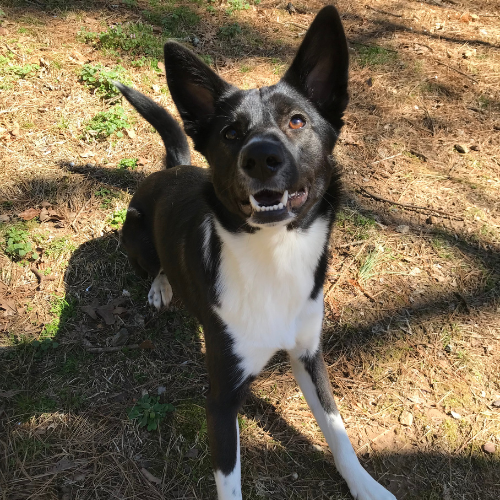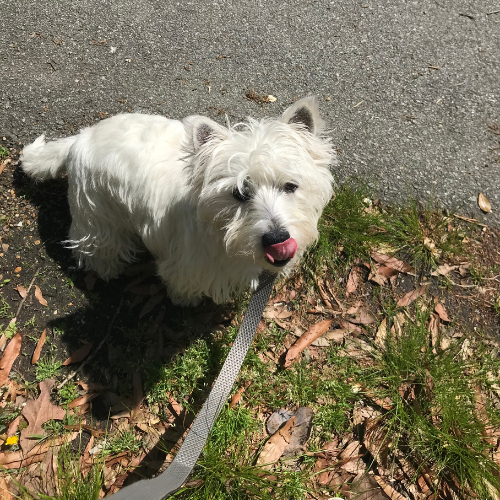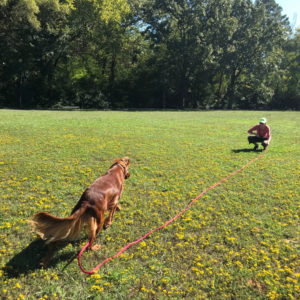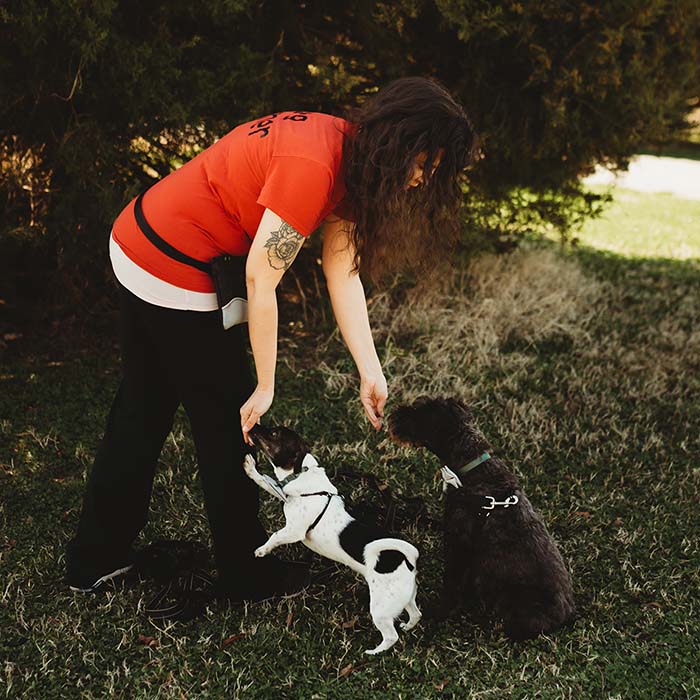There’s a reason why a lot of puppies are taken to a shelter at about nine to eleven months. Even with adequate management, training, and socialization, adolescent dogs can be a bit much.
I’ve been seeing a LOT of adolescent dogs recently, and I have six or so in class right now.
In some breeds and dogs, adolescence can start as early as six months or as late as nine or ten months, and end as early as a year and a half, or last as long as three years. A lot of changes are happening in your dog, including their brain developing with a tsunami of hormones. This is the stage where it’s tempting to call a dog “stubborn”. It is important to make sure we’re meeting our dogs’ needs and providing structure that makes sense, while still giving them plenty of choices and fun. If a dog hasn’t gotten the necessary socialization (I love this resource – not an affiliate link) or training, then we can really start to see the impact of this, as puppies may start to develop aggression and / or fear-based behaviors.

Survival Guide for Adolescent Pups
Management. Lots of puppies up until the age of five or six months will follow their human. They don’t always have a whole lot of big world curiosity. But then this changes, and adolescent dogs are pretty eager to explore. Try introducing a long line and decompression walks before they start the exploration on their own. Stopping the exploration completely can make this worse. Take a course like Attention Unlocked or my Leash Manners class if communication with your dog is a struggle outside.
Training. Utilize a protocol like Kathy Sdao’s “Get SMART” protocol, which she outlines in Plenty in Life is Free. SMART stands for “See, Mark, and Reward Training”. This means less of asking our dogs and more of capturing all of the behaviors we want to see. Dog Minded discusses this more here.
Sometimes, folks may work on recall for a bit, and then when it’s consistent, they cut out the treats or ease up on the training. Remember, even Olympic athletes with medals need to practice, and adolescence is not the time to stop that practice. Reinforce recalls heavily, practice them without a consequence (like coming inside from the backyard or leaving the dog park), and make it a party for your dog to come to you.
Exercise. Teen dogs have a lot more energy, and it may seem like they need more physical activity. Be careful with this, as depending on the age and size of the dog, high-impact activities can alter their growth, as they’re not done yet! Talk to your vet about appropriate exercise and what is best for your growing puppy. For example, more playtime may be appropriate (which should be back and forth, taking turns, taking breaks) or swimming in a pool, but not running for extended periods of time.
Enrichment. Grab some fun chews, like fish skin chews, as chewing continues to be an important activity, or turn all of their mealtimes into an enrichment activity, or buy a kiddie pool for water or sand. This is a good time to continue to figure out what your dog enjoys doing and do more of those things. Physical exercise is fantastic, and keep doing that, but without the mental stimulation to supplement it, you’re going to end up with a dog that has a hard time relaxing and slowing down as they age. Check out my resource on enrichment here. It includes a “too long, didn’t read” section at the bottom and podcast interviews with other folks.
Naps. Enrichment can really help our dogs settle and relax, as can having structured time to relax and nap. It’s tempting to take a high-energy adolescent and try to outrun that energy. We don’t want an exhaustion aspect to this nap or settle, because a thoroughly overly exhausted dog can’t heal as easily or avoid illness as well as a rested dog. They also miss out on some important rest for brain development. However, teenage dogs are much less interested in sleeping, however, so don’t force it. If their sleep schedule is off, try more enrichment activities and remember this will even out as well.
Socialization. I really start to see the impact of lacking a structured, safe socialization at around six to eight months in puppies. It’s not too late to start if you haven’t already, even if the crucial socialization period of before four months has passed. There will still be benefits of working on socialization with all dogs, including reactive or shy pups. It will just take a bit longer, and management may need to be a permanent part of the dog’s life. If you have already been socializing, keep going!
Hello. It’s easy for barrier frustration to start around this time because this is usually when we stop allowing our puppies to say hello to other dogs and people. Dogs don’t always understand that they can’t do this anymore, and that can lead to reactivity on leash, even for your perfectly socialized puppy. Working on polite greetings while young can really help, so your dog knows “go say hello” means they can go greet the other dog or person. But if you didn’t do that, it’s not too late to start working on attention and manners outside now.

Your puppy is on a normal development path, but that doesn’t mean this process will be easy. Hang in there, add in anything that’s missing, and be consistent. Maybe adding in enrichment doesn’t change anything right away, but don’t be quick to cut it back out. Consistency is the key. Remember to get some help if you need it!
Additional Resources




